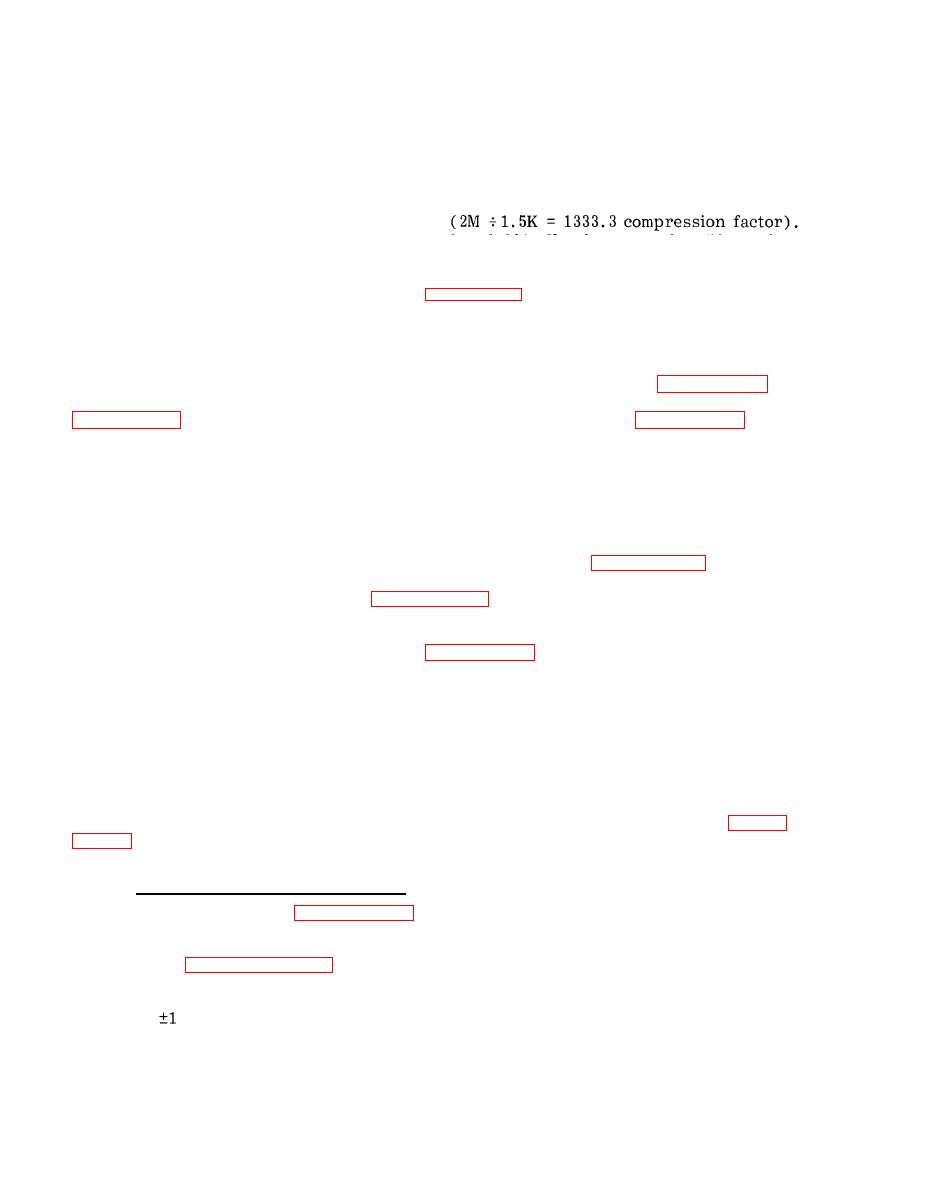 |
|||
|
|
|||
|
|
|||
| ||||||||||
|
|  TM 11-5820-917-13
the memory tail by the same number of words entered. The six-bit words circulating
in the memory are continuously clocked out at the same 2-MHz into a six-bit, digital-
to-analog converter. This output constitutes a reconstructed analog replica of the
input signal over the last 600 samples received by the memory. The frequency ex-
pansion, or time compression, achieved by the analyzer memory is equal to the ratio
of the rate that data is read out of the memory (two megawords per second) to the
rate that data is written into the memory.
Thus, the frequencies are spread between O and 666 kHz, i.e., the O to 500 Hz is
now translated into 0 to 666 kHz, (0 to 500) x 1333.3 = 0 to 666 kHz.
section of the spectrum analyzer processes the analog frequency-expanded signal
and provides a spectrum output of 0 to 5 volts amplitude, 200-line frequency reso-
lution, and 60-millisecond scan time. The 0 to 666 kHz signal from the digital-to-
analog converter is low-pass filtered to remove transition spurs caused by the con-
version process. Following the filter is a heterodyne mixer (U25-U26, figure FO-
10/1). The mixer local oscillator (2.250-2.916 MHz) is derived from a VCO (QI,
The VCO ramp is essentially equivalent to the CRT display vertical sweep. The
output of the mixer is applied to a fixed bandpass filter with an effective bandwidth
of 3.33 kHz centered at 2.250 MHz. By sweeping the mixer local oscillator between
2.250 and 2.916 MHz, the 0-666 kHz signal is translated to the filter center frequency.
This operation is equivalent to sweeping a 3.33 kHz wide filter over the 0 to 666
kHz range of the frequency expanded input data.
4-15. The mixer output is fed to the 2.25 MHz IF processor (figure FO-10/2) and
is mixed with 2 MHz. The resulting 250 kHz difference is fed to the gain weighter
circuit. The gain weighter (Q7, figure FO-10/3) reduces spurious sidebands on the
analyzed signal caused by the data discontinuity at the memory tail (the point where
the oldest and newest samples in the memory meet). The sampling filter is a high
Q active bandpass filter (C60, L3, Q1O, figure FO-10/3) centered about 250 kHz
and having an effective bandwidth of 3.33 kHz. This circuit linearly integrates
energy at 250 kHz within its bandwidth over the 300 microsecond memory recircula-
tion time. At the end of the 300 microsecond memory recirculation, a small sample
is taken at the positive peak of the 250 kHz waveform. It is the voltage amplitude
of this sample, which represents the energy in the filter over the last 300 micro-
seconds, that is used to measure spectral amplitude. At the end of the 300 micro-
second period the resonant circuit is quenched (Q11) and the process is repeated.
4-16. The output sample and hold circuit works in conjunction with the sampling
filter and supplies the peak voltage data. The output of the sampler (Q16, figure
spectrum filter for final smoothing before being sent to the CRT display logic circuits.
functions for automatic time synchronization of the receiver system. Also, a part
of the assembly contains the logic circuits to perform the receiver test which is
described in paragraph 4-22. The function of the auto sync is to relieve the
operator of the task of critical initial synchronization between the receiver and
TSC-4B transmitter. In practice, the operator is required only to time the units
to within
- second of each other after which the auto sync circuit searches for,
and locks onto the chirp signal. Then, it fine adjusts the timing to synchronize
the chirp signal within the receiver analysis window.
|
|
Privacy Statement - Press Release - Copyright Information. - Contact Us |